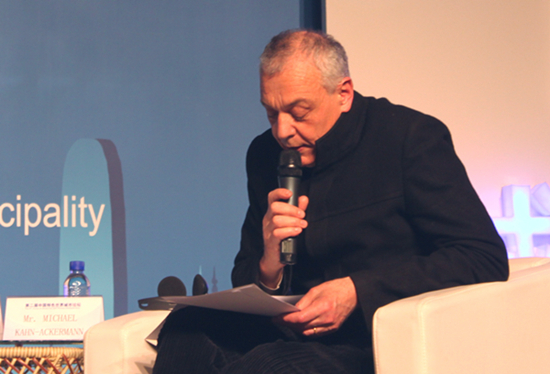'The soul of the city cannot be planned'
Editor's notes: Beijing, after 3,000 years of history, is on its way to become a modern international metropolis. At the second Forum on World City with Chinese Characteristics on Thursday, Michael Kahn-Ackermann, a German sinologist and chairman of the Goethe Institute in China, shared his experiences in Beijing and how the capital city has evolved. The following is a summary of his speech.

"My first visit to Beijing was 35 years ago. This is now my third time in Beijing. Every time I am here, I see a very different Beijing. My first impression of Beijing was from 1975 to 1977, another was from 1987 to 1994, and then the third is from 2006 till now. I'm neither an expert on urban planning nor a scholar, or an architect, a social scientist. I'm just a foreigner strolling around the streets in Beijing. I love Beijing and am happy to live here.
"Unfortunately, I can not improve the traffic condition, air quality, water scarcity and other problems that constrain Beijing's development. What I am talking about today can neither be reflected in urban planning nor be measured or designed. This is the soul of the city. In 1975, Beijing is a city exclusively for Beijing natives. The city rhythm was composed by bicycles. Foreigners would garner public attention walking down Beijing's streets. Perhaps in no cities other than Beijing could a foreigner really have the 'outsider' experience.
"Later I engaged Beijing and felt like at home quickly. But during those years of Cultural Revolution (1966-1976), my impression of Beijing was gray. The city was filled with the scent of distrust. People did not know what would happen next. When winter came, Beijing was flooded with Chinese cabbages, like heavy hailstones. People only bought the bare necessities of life. Cultural life was like a desert. However, such simplicity and uniformity gave everyone a sense of security. I also got to know the city and discovered the hidden treasures in the city by bicycle.
 0
0 






